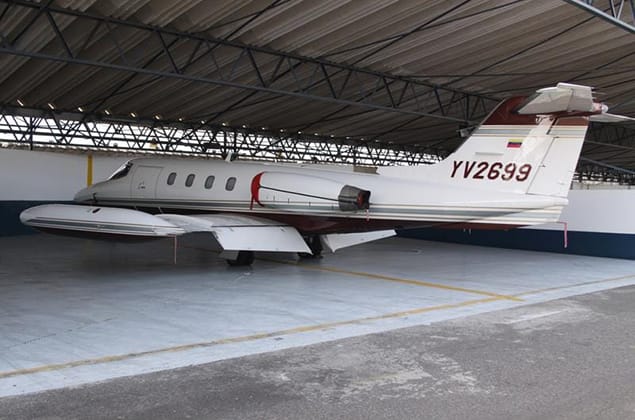Learjet 25 Specifications & Booking
Overview of the Learjet 25
The Learjet 25 is a twin-turbine business jet manufactured by Bombardier's Learjet division. It is designed for private and corporate use, offering a high-performance aircraft with exceptional range and payload capacity. The Learjet 25 first flew on December 24, 1963, and gained certification in October 1964.
Technical Specifications
The Learjet 25 has the following technical specifications:
- Dimensions: Length 44 feet 10 inches (13.7 meters), Wingspan 34 feet 8 inches (10.6 meters), Height 12 feet 4 inches (3.8 meters)
- Weight: Empty weight 11,100 pounds (5,040 kg), Maximum takeoff weight 18,000 pounds (8,165 kg)
- Engines: Two General Electric CJ610 turbojet engines, each producing 1,600 pounds-force (7.13 kN) of thrust
- Performance: Maximum speed Mach 0.82 (540 mph or 870 km/h), Range 2,200 miles (3,540 kilometers), Cruising altitude 37,000 feet (11,275 meters)
- Capacity: Passengers 6-8, Cargo capacity 1,500 pounds (680 kg), Crew 2
Design and Features
The Learjet 25 features a distinctive fuselage design with a rounded nose and angled wings. Its innovative aerodynamics provide exceptional lift and stability, making it well-suited for high-altitude flight. The aircraft also boasts advanced avionics and navigation systems.
History and Development
The Learjet 25 was developed in the early 1960s as a response to growing demand for high-performance business jets. Key milestones include:
- First flight on December 24, 1963
- Certification in October 1964
- Entry into service in March 1965
- Significant upgrades to the Learjet 25 included improved avionics and engine performance
Operational Use
The Learjet 25 has been used by various airlines and organizations for a range of applications, including:
- Airline operations: Many major airlines have operated the Learjet 25, such as Braniff International Airways and Pan Am
- Corporate use: The aircraft has also been popular among corporate executives and business leaders
- Military operations: The Learjet 25 has been used by military forces for reconnaissance and transportation missions
Interesting Facts
Here are a few interesting facts about the Learjet 25:
- The aircraft's unique design allows it to fly at high altitudes with minimal sonic boom disturbance
- The Learjet 25 was used for several record-breaking flights, including a transcontinental flight in 1964
- The aircraft has appeared in numerous films and TV shows, such as the James Bond movie "Goldfinger" (1964)
Frequently Asked Questions
What makes the Learjet 25 unique?
The Learjet 25's unique features include its high-altitude performance, advanced aerodynamics, and innovative design.
How much does the Learjet 25 cost?
The estimated price range for a used Learjet 25 is between $500,000 and $1 million, depending on configuration and customization.
What is the range of the Learjet 25?
The Learjet 25 has a maximum range of approximately 2,200 miles (3,540 kilometers), making it suitable for transcontinental flights.
Which airlines operate the Learjet 25?
Several major airlines have operated the Learjet 25, including Braniff International Airways and Pan Am. The aircraft is also popular among corporate operators and private individuals.
Is the Learjet 25 still in production?
The Learjet 25 was discontinued from production in the late 1980s. However, many examples remain in service today, with some undergoing refurbishment or restoration to maintain their original condition.





